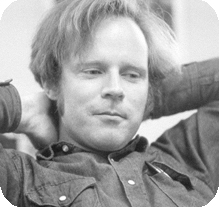
A.M. TURING AWARD WINNERS BY...
Robert (Bob) W Floyd

United States – 1978
Short Annotated Bibliography
- Floyd, R. W. and B. Ebstein, “A formal representation of the interference between several pulse trains” Proceedings of the Fourth Conference on Radio Interference Reduction and Electronic Compatibility, Chicago, 1958, pp. 180-182.This is Floyd’s first paper, published as he was completing his undergraduate degree in physics.
- Floyd, R. W. “An algorithm for coding efficient arithmetic operations,” Communications of the ACM, Vol. 4, Issue 1 (1961), pp. 42-51 available here
 .In this paper Floyd points out that the accepted method of a compiler scanning an arithmetic expression from left to right in order to determine how it should be computed was not the best. The standard scanning could, and often did, lead to inefficiencies. He was able to demonstrate that a right to left scan was better and, for items such as subscripted variables, a sequence of scans in different directions was best.
.In this paper Floyd points out that the accepted method of a compiler scanning an arithmetic expression from left to right in order to determine how it should be computed was not the best. The standard scanning could, and often did, lead to inefficiencies. He was able to demonstrate that a right to left scan was better and, for items such as subscripted variables, a sequence of scans in different directions was best. - Floyd, R. W., “Assigning meanings to programs,” Proceedings of Symposia in Applied Mathematics Vol. 19 (1967), pp. 19-32.The technique described in this paper assigns logical propositions at each point in a program where the sequence of execution could possibly change. This was one of the earliest attempts to develop ways of proving that programs are correct, proving the equivalence of sections of code and proving that programs would eventually halt.
- Floyd, R. W. and Richard Beigel, The Language of Machines, New York, Computer Science Press, 1994. French translation by Daniel Krob, Le Langage des Machines, Paris, International Thomson, 1995, German translation by Philip Zeitz and Carsten Grefe, Die Sprache der Maschinen, Bonn, International Thomson, 1996. See the citation in the ACM DL.A reviewer said: “The distinctive feature of this text is that wherever possible, it develops the subject from the standpoint of [theoretical] machines rather than purely from algebraic constructions. This almost always makes the concepts more intuitive, just as the Turing machine is often considered more intuitive than studying first order logics and their models.”
View Author Page in the ACM Digital Library for a more extensive listing.




























 THE A.M. TURING AWARD
THE A.M. TURING AWARD